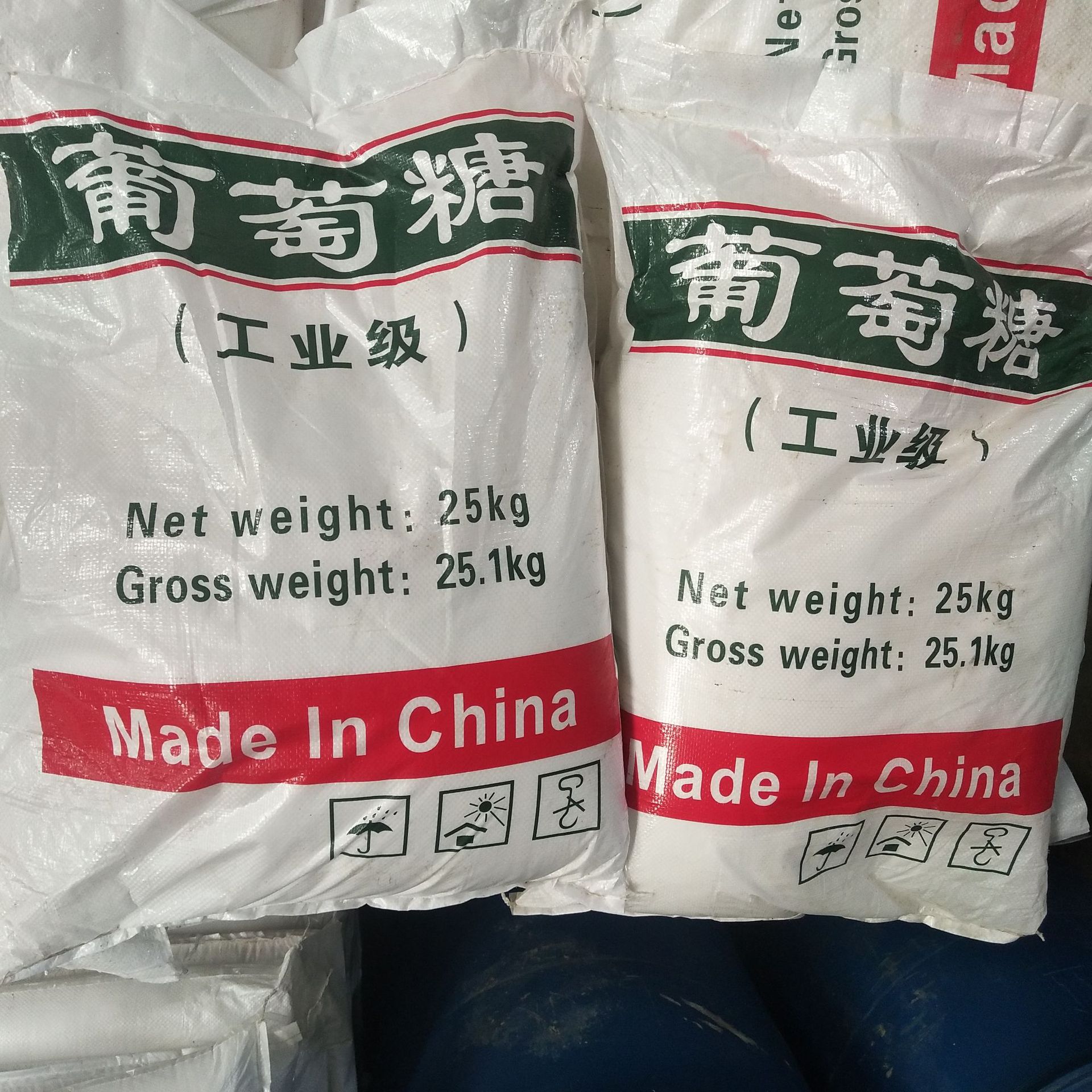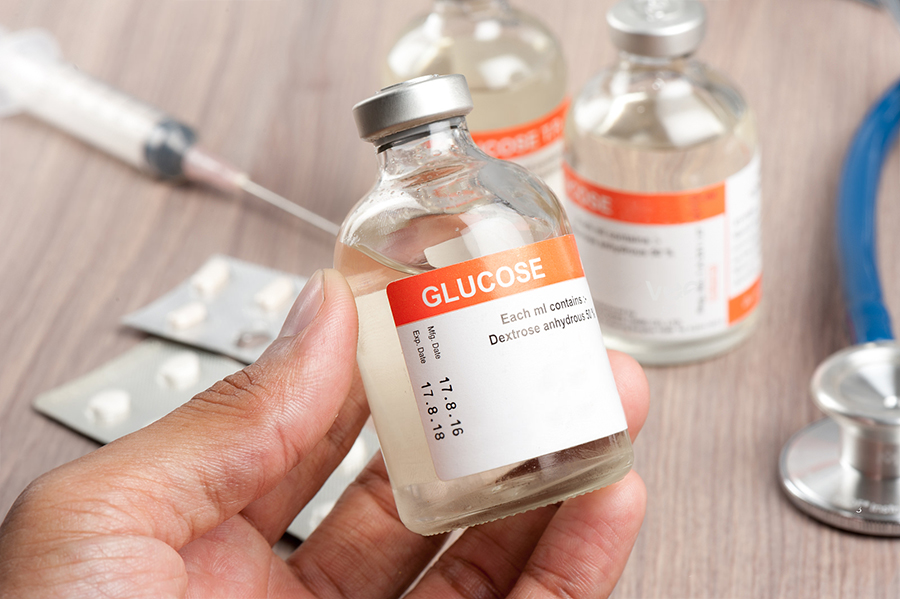Sinoright Blog
What are the Classifications and Uses of Glucose?
Glucose as the basic element of human body and the most basic pharmaceutical raw materials, its role and use is very wide. Especially with the improvement of people's living standard, glucose is used in the food industry as a substitute sugar for sucrose, which opens up a broader field for the application of glucose.
Fermentation Industry
The growth of microorganisms requires a suitable ratio of carbon and nitrogen, glucose as a carbon source of microorganisms, is the main material of fermentation medium, such as antibiotics, monosodium glutamate (MSG), vitamins, amino acids, organic acids, enzymes, etc. need to use glucose in large quantities, but also can be used as a microbial polysaccharides and raw materials for organic solvents.
1, Antibiotic Fermentation
Glucose is an important raw material for pharmaceutical industry, especially the essential raw material for antibiotic fermentation, the most important varieties of antibiotics are penicillin and streptomycin, and the fermentation of these two kinds of antibiotics are glucose as carbon substrate. Penicillin fermentation with high DE value of glucose solution as the substrate, can also use crystallized glucose mother liquor, or DE value of more than 95% of the starch hydrolysis (i.e., glucose solution); Streptomycin fermentation with crystallized glucose, can also be used for high DE value of glucose solution; others such as rifampicin also glucose as the main source of carbon; Putamycin, erythromycin So, madicin is also glucose as a substrate, only a small amount of starch; Kanamycin, gentamicin, etc. also need to use glucose as substrate.
2, Amino Acid Fermentation
Amino acids are the basic components of protein in all living cells, its nutritional value is very high, for the nutritional supplements in medicine and some emergency treatment agents, some amino acids can be made into sodium salt injection, such as monosodium glutamate injection; amino acids are important food flavoring and additives, most amino acids, especially amino acids from the fermentation of amino acids, glucose as a carbon source for the production. For example, L-glutamic acid is glucose or starch hydrolysate as a carbon source, under high aeration conditions, neutral PH, temperature 28-30 ℃, fermentation 36-48h, glutamic acid absorption of glucose can reach 33% to 5O%; L-lysine is also produced by glucose fermentation, glucose as a carbon source, protein hydrolysate and urea as an ammonia source, neutral PH, 2 ℃, under good aeration conditions. Under the condition of neutral pH, 2℃ and good aeration, the absorption rate of lysine to glucose can be up to about 33% after 3-4d fermentation.
3, Organic Acid Fermentation
Most of the industrially important organic acids are produced by fermentation of glucose or starch hydrolysate, including acetic acid, citric acid, gluconic acid, lactic acid and itaconic acid, and other maleic acid, fumaric acid and D-tartaric acid can be produced by fermentation of glucose or starch hydrolysate. Such as the food industry, the largest amount of citric acid, with its unique properties and 80% used in the food industry, citric acid acid acid and mild pH buffer, can be used as pH stabilizers, flavor enhancers and antioxidant synergists, about 10% used in medicine as a carrier for the release of drugs and anticoagulant components of the carrier flavoring, and the rest of the rest of the industry for other industries, such as metal cleaners, cement coagulants, and so on. Gluconic acid, glucose fermentation, pH is maintained at 4-7, aeration must be sufficient, the oxidation of glucose dehydrogenase to produce gluconic acid, calcium carbonate or sodium hydroxide can be neutralized to produce calcium gluconate or sodium gluconate, can also be used to produce gluconic acid δ-lactolipid after fermentation of specialized strains of bacteria can be produced without neutralization. Gluconic acid fermentation in sufficient aeration, gluconic acid to glucose yield up to 90%, citric acid to glucose yield up to 80% -85%.
4, Enzyme Production
Enzyme industry has developed rapidly in recent years, because of its effective, specialized catalytic effect, widely used in medicine and food and daily chemical industry. Enzyme fermentation production of the vast majority of glucose or starch hydrolysate as a medium, such as bacterial α-amylase to starch liquefaction as a medium; glucose isomerase is 2% of glucose as a medium for the production of; protease industrial production is also glucose as a medium.
5, Microbial Polysaccharide Fermentation
Nowadays, many microbial polysaccharides produced by fermentation method have been developed, such as xanthan gum, etc. They can be obtained by fermentation method with glucose as the substrate, and they have various uses in the food industry. Xanthan gum is mainly used for textile printing and dyeing, oil drilling, food additives, cold food seasonings, can also be used to remove metal ions from industrial wastewater, to enhance the strength of paper and for rubber and so on.
6, Organic Solvent Production
Glucose for the fermentable sugar, the most suitable for the production of various organic solvents, such as methanol, acetone, butanol and so on.
Food Industry
At present, crystallized glucose is mainly used in the food industry, with the improvement of living standards and the continuous development of food industry technology, glucose is more and more widely used in the food industry, and the food industry is still the largest market for a long time to come.
1, Direct Consumption
Glucose can be directly absorbed by the human body without digestion, quickly replenish energy for the human body, more suitable for oral consumption. Glucose can be directly packaged into various specifications of small packages (usually 500) or add a variety of vitamins to become multi-dimensional glucose, can be directly consumed according to the amount needed, such as used as sugar for infants is conducive to the absorption of the long-term consumption of powdered milk to eliminate the fire produced; a variety of flushing sugar, such as coffee, cocoa, cream of wheat, the breakfast additive condiments; the family's daily sugar, such as roasted vegetables seasoning, sweets, sugar, according to the actual application of people introduced. According to the practical application, the use of glucose for daily family sugar is better than sucrose, less impurities, color, aroma and taste are good; a variety of cold drinks and summer food sugar, such as ice green bean soup, peanut soup, sour plum soup, and so on.
2, Confectionery Industry
Glucose has been changed from the beginning of only additives to the main raw material, both to improve the taste of candy, but also in line with the requirements of nutrition and health care. Crystalline glucose can also be coated for chewing gum and bubble gum and increase its sweetness, it can improve the color and luster of the chewing gum coating, and can produce a very cool taste, while it also provides high hardness for the sugar coating.
3, Baking Industry
Glucose as a new high-grade food additives, applied to the production of a variety of confectionery production, used to improve the flavor, texture, color and lustre of the product, in particular, to improve product quality grade, has been vigorously promoted by the industry.
The use of glucose in baked goods not only reduces costs, but also has the unexpected effect of improving quality. Used in bread can promote the growth of yeast and produce gas, glucose is also easy to produce with the protein and amino acids in the flour to produce the Melad reaction, producing a golden crust and the unique flavor of bread. Bread crust has better toughness, does not break easily in handling, and is easier to slice.
In the production of baked goods such as cookies and sweetbreads, replacing 5%-25% of sucrose with glucose enables the dough to expand more uniformly during baking, yielding a product with a more uniformly colored exterior.
There are also a lot of baked goods surface with frosting, in the past are used sucrose finely ground to prepare frosting. If we use glucose powder instead of sucrose to make icing, the icing with 50% glucose powder has the same color, texture and brightness as the icing with full sucrose, and the glucose icing will show good fluidity and no obvious lumps when stored for a long period of time at high room temperature, the effect is the same as the pure sucrose icing powder.

4, Vegetable Processing Industry
With the increasing demand of international market and the continuous progress of vegetable processing technology, glucose, as a kind of nutrient and preservative, is irreplaceable in the status of high-grade fresh and dehydrated vegetable processing. All kinds of vegetables in the dehydration before the need to add sugar, its main purpose is to improve the dehydration effect; reduce the dehydration of the product after the water activity; to prevent the dehydration process of vegetables excessive volume contraction, rehydration of vegetables is easy to restore the original state of the organization. Generally, after the vegetables are scalded, sugar is added and left to stand for 1 hour, so that the sugar penetrates into the interior of the vegetables. Commonly used sugars are sucrose, glucose, the maximum dosage of up to 20% of the dry matter. If the price of sucrose is high, glucose can be used instead of all.
5, Drinks
Glucose can reduce the freezing point, prevent the crystallization of sucrose, dissolve the heat absorption is 6.5 times higher than sucrose, good taste (the entrance has a sense of coolness), especially suitable for summer ice food, such as ice cream, ice cream, popsicles, ice water, and mint food; glucose can be used as a carrier, used as a flavor-enriching and expanding agent, and can provide sweetness, such as a variety of ready-to-eat tea, lemon tea, chrysanthemum tea, fruit tea, and other tea; glucose can be used to Glucose can be used to balance the sweetness and increase the flavor, it can be used to replace 30% of sucrose in fruit juice concentrate and 10%-20% of sucrose in carbonated drinks; glucose is monosaccharide, molecular weight and calorific value are lower than sucrose, glucose can accelerate the fermentation by adding it to the malt and other raw materials for making beer and can get the same alcoholic content of the low-hot beer, cider and other fruit wines can be adjusted by glucose due to the difference of the sugar content in the harvested fruits every year. Glucose can be used to regulate the sugar content of cider and other fruit wines.
6, Meat Products
The application of glucose in meat processing in addition to the purpose of increasing nutrition as a condiment, there is also the purpose of regulating pH value and redox. For ordinary meat processing, its use of 0.3% to 0.5% is more appropriate. Glucose used in fermented sausage products, because it provides the fermentation bacteria into lactic acid needed for the carbon source, for this purpose and add the amount of glucose for 0.5% to 1.0%, glucose in meat products as a coloring agent and coloring agent, so that the cured sausage has a red sausage, add the appearance of sausage beauty. In addition, it also has the function of sterilization and antiseptic, which can prolong the shelf life of sausage.
Chemical Industry

Glucose is also widely used in industry, as a reducing agent in printing and dyeing and tanning industry, and glucose is also commonly used as a reducing agent in the mirror industry, silver plating of hot water bottle gallbladder and silver plating of glass fiber and other chemical silver plating industry. Processing industrial glucose during the commissioning of sewage treatment can provide a carbon source, can better cultivate bacteria, improve the biochemistry of sewage, used in water recycling treatment.
1, Glucose in the tanning industry in the manufacture of chrome tanning agent applications: chrome tanning agent is the manufacture of light leather (upper leather, clothing leather) the best tanning agent. Tanning with chrome salt has a history of 100 years. The leather made has the characteristics of high shrinkage temperature, good elasticity, resistance to flexing, resistance to washing, solid and durable. Chrome tanning agent is mainly alkaline chromium sulfate (alkaline chromium chloride can also be used, but its tanning effect is worse than chromium sulfate). Its manufacturing method is to glucose or sulfur dioxide as a reducing agent, in sulfuric acid solution will be dichromate reduced to alkaline chromium sulfate, that is, made of chrome tanning solution, tanning solution by concentrating, drying, you can get powdered chrome tanning agent.
2, In the sewage treatment by adding glucose can better cultivate bacteria, improve the biochemistry of sewage. Sewage treatment as a source of sludge nutrients, faster than urea, if the operation of the system COD, BOD is not enough to supply the bacterial growth and reproduction, then you need to add another, in order to prevent sludge aging, biological activity is reduced. Glucose has a very important role in stabilizing water quality, such as in the nitrite and phosphorus in the sewage, as glucose powder can be used to coordinate the effect, which can enhance the strength of corrosion inhibition. If you test on different water sources, you can use a small amount of industrial glucose to find the most appropriate amount to put, usually the production process of the enterprise will be in the degree of solid and water 1:5 to pair, first go to complete the process of dissolution and then go to add water for dilution. Therefore, industrial glucose has an important application value to the real-life water problems and various industrial wastewater treatment, and has achieved good results in the purification of industrial wastewater.
Synthesis and Conversion
Glucose can be hydrogenated, oxidized, isomerized, alkaline degradation, esterification, acetalization reaction, synthesized or converted into other products. Such as hydrogenation of sorbitol; oxidation of glucuronic acid, diacid, etc., and can be further made into acid calcium, acid sodium, acid zinc and gluconic acid δ-lactone; isomerization of F42, F55, F90 fructose syrup and crystalline fructose; can also be isomerized into mannose (raw material for the production of Mannitol), of which sorbitol can be further generated from Vitamin C, is widely used in clinical treatment, and Mannitol 15% in the clinic! As a safe and effective drug to reduce intracranial pressure to treat cerebral edema and glaucoma.
Glucose can also be used in the production of polydextrose, which is a water-soluble dietary fiber, a low-calorie, sugar-free, low glycemic index of special carbohydrates, but also has the characteristics of prebiotics, which is made of naturally-occurring glucose, a small amount of sorbitol, citric acid melting and condensing at high temperatures, and it is a polysaccharide composed of randomly cross-linked glucose. Polydextrose as a role and performance of one of the best dietary fiber, can be used for a variety of food fiber fortification, replacing sugar and fat in the food, improve the texture and taste of food.
Pharmaceutical Industry

Glucose is a kind of carbohydrate that can be directly absorbed and utilized to replenish caloric energy, and is the main source of energy required by the human body, which is oxidized into carbon dioxide and water in the body and supplies energy at the same time, and is converted into the form of sugar source or fat for storage, and glucose promotes the detoxification function of the liver, and has a protective effect on the liver. It is mainly used to replenish heat energy and body fluids, for various reasons caused by insufficient food or large amounts of body fluid loss, for physical weakness, malnutrition and other supplemental nutrition. Its main uses in medicine can be divided into two kinds of oral and injection, oral glucose can be taken alone or made into multi-dimensional glucose to take.
